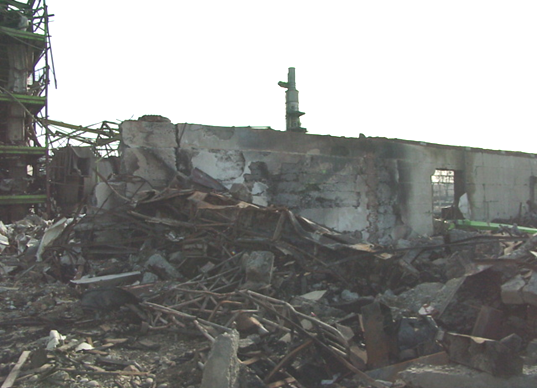The EU Seveso Directive
Over 30 years the Seveso Directive legislation has been the reference framework for authorities and industries for reducing exposure of the EU's workers, citizens and environment to chemical accident risks.
Success in reducing risks is repeatedly challenged by the complexity of chemical processing, the vast array of hazardous substances and circumstances in which they are used, the changing economic environment, and constantly emerging technologies and uses involving dangerous substances. In 2010 alone the number of major accidents reported to the EU’s Major Accident Reporting System (eMARS – https://emars.jrc.ec.europa.eu) using the major accident criteria p ublished in Annex VI of the Seveso Directive doubled from the year before. For this reason the EU’s Seveso Directive for the control of major accidents involving dangerous substances remains a strong component of EU strategies for disaster risk reduction and sustainability of natural resources. The Seveso Directive, first enacted into European law in 1982 and most recently revised in 2012 (Directive 2012/18/EU, effective 1 June 2015), establishes one single performance standard, that is, operators must take all necessary measures (both technical and organizational) to prevent accidents and limit their consequences. To ensure meeting this goal, the Directive fixes a number of requirements applying variously to operators and authorities that specifically address the assessment and management of hazards and risks, emergency planning, land use planning, inspections, information to the public, and accident investigation and reporting.
ublished in Annex VI of the Seveso Directive doubled from the year before. For this reason the EU’s Seveso Directive for the control of major accidents involving dangerous substances remains a strong component of EU strategies for disaster risk reduction and sustainability of natural resources. The Seveso Directive, first enacted into European law in 1982 and most recently revised in 2012 (Directive 2012/18/EU, effective 1 June 2015), establishes one single performance standard, that is, operators must take all necessary measures (both technical and organizational) to prevent accidents and limit their consequences. To ensure meeting this goal, the Directive fixes a number of requirements applying variously to operators and authorities that specifically address the assessment and management of hazards and risks, emergency planning, land use planning, inspections, information to the public, and accident investigation and reporting.
Over the the years, the Major Accident Hazards Bureau has supported Seveso Directive policy in a number of ways, including:
- research and consultation with DG-Environment on potential changes to new Seveso legislation
- advice on technical aspects to aid legislative interpretation in association with specific processes and substances
- collaboration with Member States to produce EU guidance for implementing certain obligations
- producing technical studies and tools with competent authorities and industry to support common approaches to implementation
- facilitating exchange among Seveso authorities and industry of good enforcement and risk management practices
- implementing EU level data collection requirements for establishments and accidents
- refining analytical models and tools for risk analysis and learning lessons from accidents
The role of MAHB and its focus and priorities continually changes over time to remain in step with Commission policy priorities and responsive to new challenges in chemical accident prevention both in the EU and globally, in a way that leverages its unique role, resources and competences to bring the greatest advantage to the EU Member States.
For more information on the history and current developments associated with the Seveso Directive, please go to the DG-Environment site dedicated to the Directive: DG-Environment - Seveso Directive

